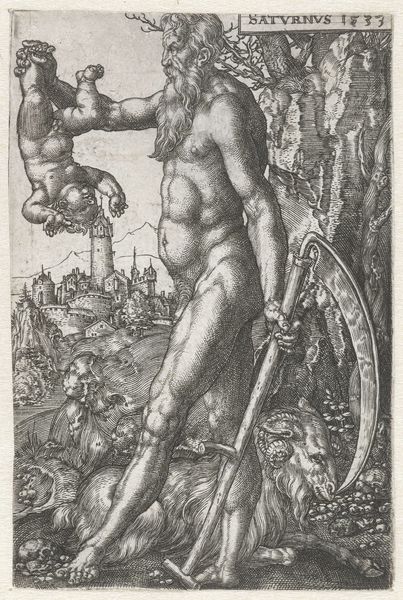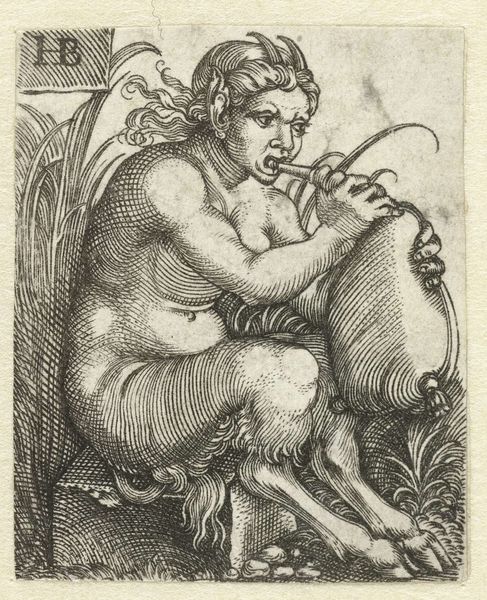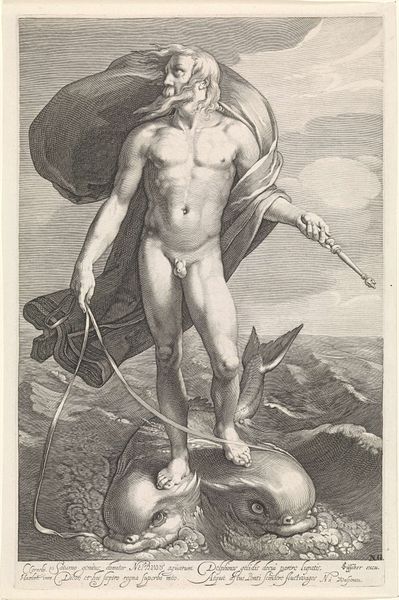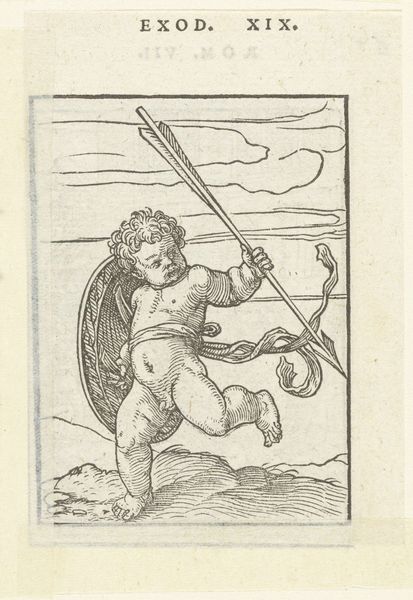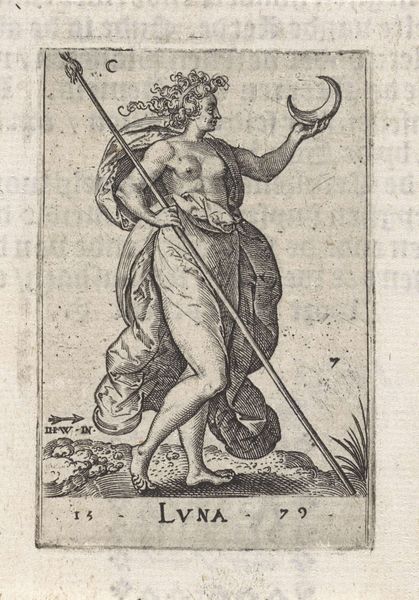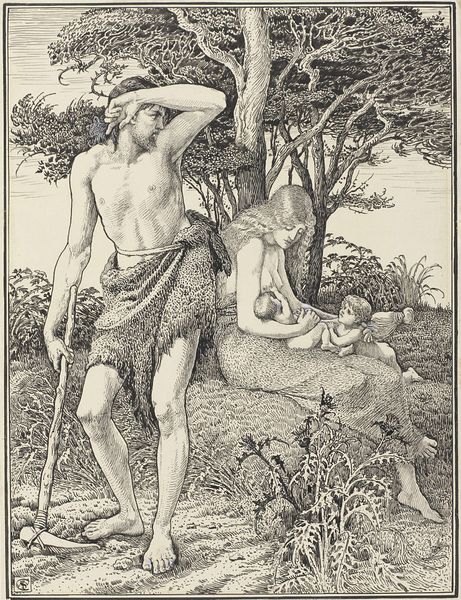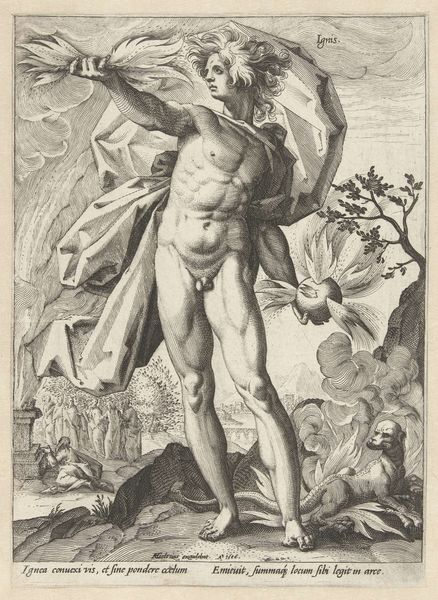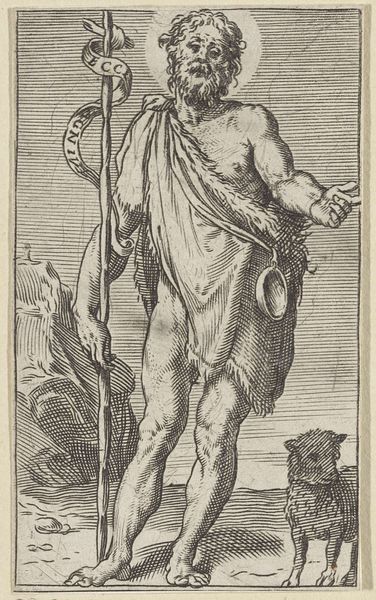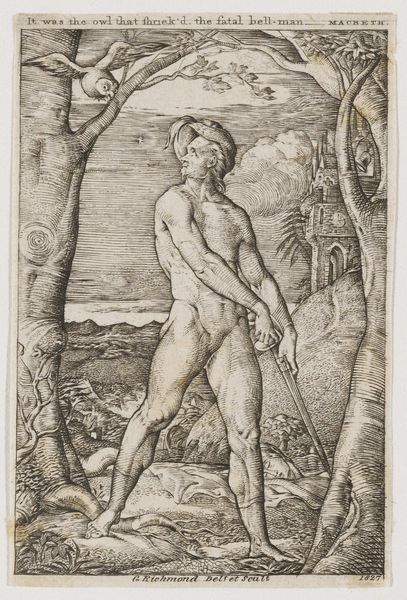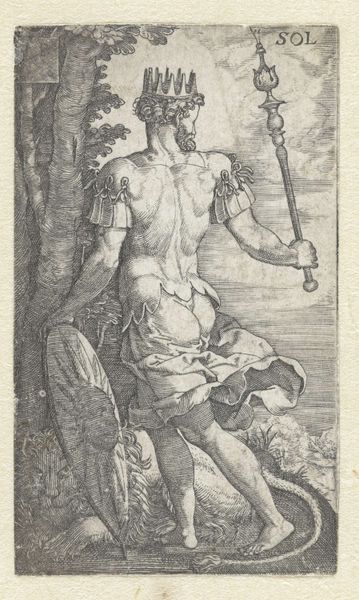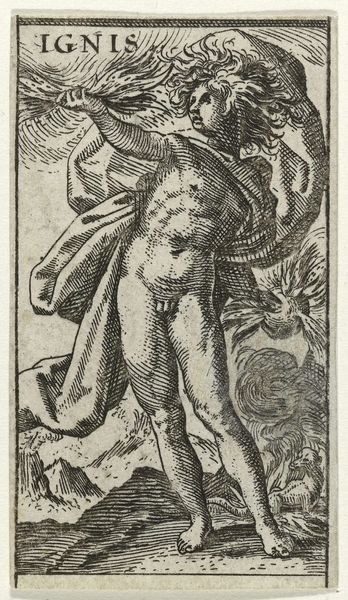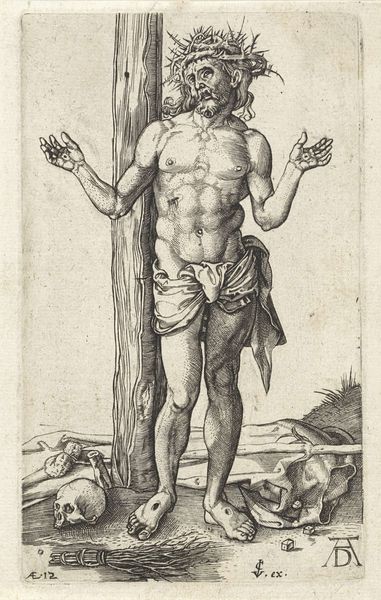
engraving
#
baroque
#
landscape
#
figuration
#
history-painting
#
engraving
Dimensions: height 184 mm, width 117 mm
Copyright: Rijks Museum: Open Domain
This is Jacob Matham’s ‘Adonis,’ made in the late 16th or early 17th century, using engraving. This intaglio printmaking process involves cutting a design into a flat surface, traditionally a copper plate, with a tool called a burin. The making of this print involved many artistic decisions: the composition, the rendering of the figure’s anatomy, the landscape, and the dogs. But just as crucial was the artist’s control of the burin. Note the consistent, parallel lines used to create shading. This was a highly skilled tradition, demanding years of practice. Consider the way the medium itself influences the image. The incised lines create a graphic quality, with stark contrasts of light and dark. This aesthetic aligns with the broader history of printmaking, a medium closely tied to the rise of capitalism. Prints like this were relatively inexpensive, easily reproduced, and widely disseminated, making art accessible to a broader audience. Matham's ‘Adonis’ shows how even an image of classical mythology is shaped by the dynamics of labor, production, and consumption.
Comments
No comments
Be the first to comment and join the conversation on the ultimate creative platform.
